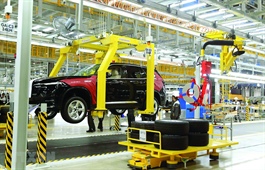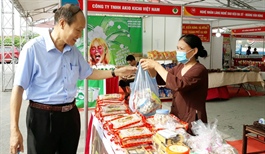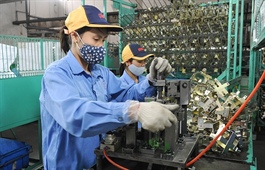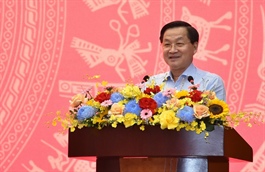City eyes public-private partnership infrastructure investment
City eyes public-private partnership infrastructure investment
HCM City is seeking to attract investment in infrastructure under public-private partnerships (PPP) as part of a commitment to creating a fair and flexible mechanism to harmonise the benefits of both the administration and investors, a city official said.

Speaking at a conference in the city last week, Cao Thị Phi Vân, deputy director of HCM City Investment and Trade Promotion Centre, said it was vital that the risks in PPP projects be equally shared between the Government, investors and banks.
The city would improve regulations on investment under BOO (build-own-operate), BOT (build-operate-transfer) and BT (build-transfer) contracts under the 2021 Law on PPP, which provides a legal framework for all PPP projects, she said.
As the city government and private investors increasingly recognise the benefits of sharing resources for a common cause, PPP projects are set to evolve in the city, according to Vân.
The investment model is particularly useful for the largest city to deal with a capital shortage on infrastructure investment amid the pressures of public debt and limited State revenue.
It also helps the city address multiple urban issues related to traffic congestion, flooding and environmental pollution, she added.
The city has 22 projects under the PPP model, with a total investment of VNĐ64 trillion, including 11 completed projects mostly in the field of transport infrastructure.
Vũ Quỳnh Lê, deputy director of the Ministry of Planning and Investment’s Public Procurement Agency, said a PPP is a contract between the State and a private investor, bringing together the expertise and resources of the two sectors in order to provide services or infrastructure at a better value for money.
However, a PPP contract would have more binding obligations than a normal contract, she added.
“Capable investors need to ensure sufficient financial and technological capacity and experience to meet the requirements of project implementation, mostly large-scale projects,” she said.
Châu Việt Bắc, deputy general secretary of the Việt Nam International Arbitration Centre in HCM City, pointed out, “there are problems in the implementation of BT projects due to a lack of specific guidelines and regulations.”
He called for a comprehensive review of the 2021 Law on PPP, and detailed guidelines in the meantime to regulate the relationship between the Government and investors.
A risk-sharing mechanism is also needed to ensure the benefits of both the State and investors during project implementation, as well as resolve any dispute if any, he added.
He recommended that with contractual disputes remaining common with significant costs, investors need to carefully study any risks that may arise to avoid any dispute.
Leif D. Schneider, vice chairman of the European Chamber of Commerce in Việt Nam’s legal sector committee, said certain minimum standards must be guaranteed by the Government to lower risks and costs for foreign investors.
It is vital to be flexible about the content, terms and conditions of PPP agreements. “Transparent bidding procedures are also needed to foster investor trust,” he said.
By 2025, the Government plans to call for foreign investment in 157 projects in the fields of transport infrastructure, industrial parks and economic zones, energy, IT, waste and wastewater treatment, education, health, manufacturing and services.
Of these projects, 24 are in transport while 23 of them are under the PPP model.
By 2025, HCM City will need to call for investment in its four metro projects with a total investment of US$9.7 billion, mostly through Official Development Assistance (ODA) and from the private sector.
HCM City’s population has grown to a whopping 13 million, including migrants from other parts of the country. It is in dire need of new hospitals and schools while the city is working hard to pay for nearly 200,000 State employees.
Public investment alone is not enough to meet the rising demands for infrastructure development in the country’s largest economic hub.






















